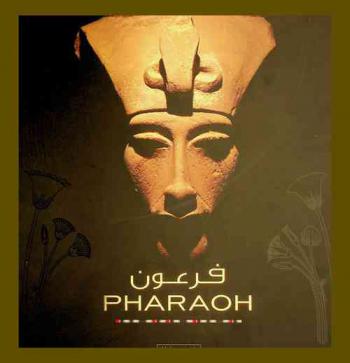Catalogue Search | MBRL
Search Results Heading
Explore the vast range of titles available.
MBRLSearchResults
-
DisciplineDiscipline
-
Is Peer ReviewedIs Peer Reviewed
-
Series TitleSeries Title
-
Reading LevelReading Level
-
YearFrom:-To:
-
More FiltersMore FiltersContent TypeItem TypeIs Full-Text AvailableSubjectCountry Of PublicationPublisherSourceTarget AudienceDonorLanguagePlace of PublicationContributorsLocation
Done
Filters
Reset
35
result(s) for
"Egypt Kings and rulers Biography."
Sort by:
Cleopatra
2011
Cleopatra—a brave, astute, and charming woman who spoke many languages, entertained lavishly, hunted, went into battle, eliminated siblings to consolidate her power, and held off the threat of Imperial Rome to protect her country as long as she could—continues to fascinate centuries after she ruled Egypt. These wide-ranging essays explore such topics as Cleopatra's controversial trip to Rome, her suicide by snake bite, and the afterlife of her love potions. They view Cleopatra from the Egyptian perspective, and examine the reception in Rome of Egyptian culture, especially of its religion and architecture. They discuss films about her, and consider what inspired Egyptomania in early modern art. Together, these essays illuminate Cleopatra's legacy and illustrate how it has been used and reused through the centuries.
Ptolemy of Egypt
1994,2003,1993
Ptolemy was the creator of the longest lasting of the Hellenistic kingdoms. He created a state whose cultural importance was unparalleled until the coming of Rome. He encouraged the erection of the Pharos Lighthouse, one of the seven wonders of the ancient world, as well as creating a library which eventually contained the greatest collection of books until relatively recent times. Ptolemy's institution of higher learning, the Museum, gave birth to the greatest advancements in science before the seventeenth century of our own era. In this work, the first biography of Ptolemy in any language, Professor Ellis charts Ptolemy's extraordinary achievements in and beyond Egypt in the context of the fragmentation of Alexander's enormous empire and the creation of the Hellenistic state.
Cleopatra
2010,2011
In Cleopatra, Duane Roller provides the definitive biography of Cleopatra VII (69-30 BC), not as a figure in popular culture or even in the arts and literature of the last five hundred years, but as the last Greek queen of Egypt.
Saladin : the sultan who vanquished the crusaders and built an Islamic empire
\"Saladin remains one of the most iconic figures of his age. As the man who united the Arabs and saved Islam from Christian crusaders in the twelfth century, he is the Islamic world's preeminent hero. A ruthless defender of his faith and brilliant leader, he also possessed qualities that won admiration from his Christian foes. But Saladin is far more than a historical hero. Builder, literary patron, and theologian, he is a man for all times, and a symbol of hope for an Arab world once again divided\"--Amazon.com.
The Last Queens of Egypt
2003,2014
The last of the Ptolemaic monarchs who ruled Egypt for 300 years, Cleopatra is the most famous of the Ptolemaic queens. But what of her predecessors? The Last Queens of Egypt examines the roles played by the Ptolemaic royal women and explores their part in religion, politics and court intrigue. Explaining their propensity for incest, murder and power, Sally Ann Ashton shows the extent of the power they enjoyed, the price they paid, and how they shaped Cleopatra's reign.
Saladin
Working simultaneously on two levels, 'Saladin' represents a different kind of biography - a portrait of a man who is said to have made an age, and the most complete account we have to date of an age that made the man.
Amarna Sunset
2009,2010
This new study, drawing on the latest research, tells the story of the decline and fall of the pharaoh Akhenaten’s religious revolution in the fourteenth century bc. Beginning at the regime’s high-point in his Year 12, it traces the subsequent collapse that saw the deaths of many of the king’s loved ones, his attempts to guarantee the revolution through co-rulers, and the last frenzied assault on the god Amun. The book then outlines the events of the subsequent five decades that saw the extinction of the royal line, an attempt to place a foreigner on Egypt’s throne, and the accession of three army officers in turn. Among its conclusions are that the mother of Tutankhamun was none other than Nefertiti, and that the queen was joint-pharaoh in turn with both her husband Akhenaten and her son. As such, she was herself instrumental in beginning the return to orthodoxy, undoing her erstwhile husband’s life-work before her own mysterious disappearance.













